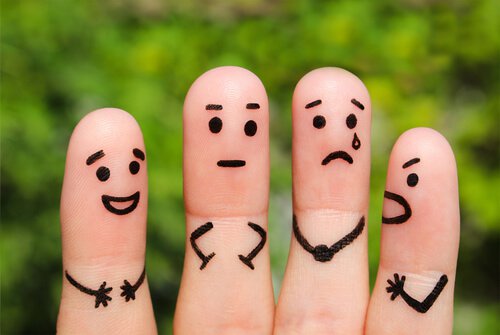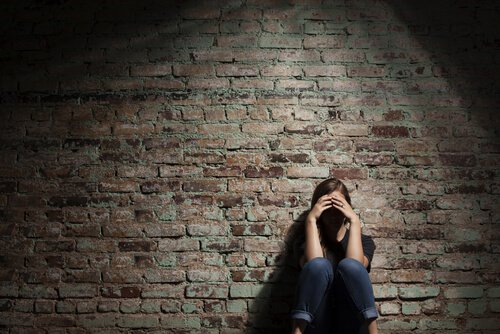Emotional Instability: Going from Tears to Laughter

Yesterday you loved poetry and today you detest it. Last year you felt motivated to work out and we have barely started the year and you have already stopped going to the gym. You laugh at the wrong times or you cry without understanding why. Maybe these are some signs that tell you that you are going through “emotional instability.”
If you go from tears to laughter, from passion to indifference, and from love to hatred in the blink of an eye, maybe you need to understand your feelings and sensations a bit better and find the healthy balance between them.
Emotional instability: the typical highs and lows
It is true that we cannot feel the same way every day and that we fortunately count on various mechanisms to express what is happening to us. But the problem lies in the magnitude and the variation of our moods, when they are sudden and extreme and with no apparent reason.

Unreasonable and intense highs and lows in our mood can be harmful to our mental health and our relationships with others. When we live in a permanent “emotional rollercoaster” we can’t maintain fondness for anything nor understand what is happening to us. If you go through stages of emotion, depression, euphoria, tears, energy, fear, happiness, and worry in one day… you may be suffering from emotional instability.
Emotions vs. mood
To better understand emotional instability or imbalance, first we must know how to distinguish between emotions and moods.
Emotions are intense and varying and they appear as a reaction to a stimulus. Be it external, like a traffic jam when we are in a hurry, or internal, such as a memory. That is to say that without a certain situation, they cannot develop. A traffic jam causes anger, a love letter causes happiness, and a loss causes sadness.
Moods, on the other hand, tend to be stable over time. They can even remain stable for weeks since they are deeper and can be determined by various factors, from lifestyle to the nervous system.
When a person is emotionally unstable, their mood varies frequently. This problem can be conditioned by a concrete circumstance, such as exhaustion, low self-esteem, or a lack of goals, but it can also be due to a cause that we do not know how to explain. One way or another, if our mood is negative, it requires our intervention.
How do I know if I am suffering from emotional instability?
It is worth taking the time to think and analyze how you feel throughout the day. It is normal for you to start the morning with energy and a good mood and to get to the afternoon feeling irritable and like your “battery” is low. But we are talking about something different. Do you experience many lows throughout the day or mood swings without being able to understand the reasons for such a big change?
If you have no reason for you various moods or if it is difficult for you to take notice of your highs and lows, it is likely that emotional instability is taking up residence in your personality.

The symptoms of this syndrome are based on 6 different moods: euphoria, sadness, fickleness, low tolerance for frustration, insecurity, and difficulty separating and leaving problems in the domain that they belong to (work, family, friendship, etc.). One example of this last point is taking problems from work home or vice-versa.
Why can emotional instability happen?
The factors that determine this disorder are variable; however, among the most common, are changes in metabolism and biorhythm, problems concentrating and sleeping, and also the consumption of certain harmful substances.
In most cases, stress and an imbalanced lifestyle causes all kinds of instability, including emotional, of course. The hormones responsible for balancing our emotions, like serotonin, do not exist in adequate levels and cause problems.
For this reason, it is not strange for emotional instability to be more common in women than in men. Why? Because hormonal variations are stronger in women than in men.
This is not a matter of sexism or labeling them as unbalanced, but rather understanding that what happens inside us has repercussions on our reactions to each situation. Or even how we react without having a stimulus!
The consequences of emotional instability
Emotional instability is a very heavy burden when we cannot find stability on which to secure our projects.
Dropping out of college, breaking up with your partner, or not accepting a change at work causes frustration and sadness. The exaggerated reaction to the words and actions of others, as well as the fact of not knowing how to behave in the face of certain situations, can lead to cutting off ties with close people.
All of this affects self-esteem, intensifies mood swings, and leads to the formation of a vicious circle that is hard to escape. This is why it is essential to pay attention to those highs and lows in our moods. Maybe you are going through a difficult time and you need to speak to someone about it or at least with yourself.
This text is provided for informational purposes only and does not replace consultation with a professional. If in doubt, consult your specialist.








